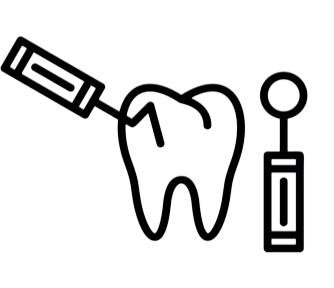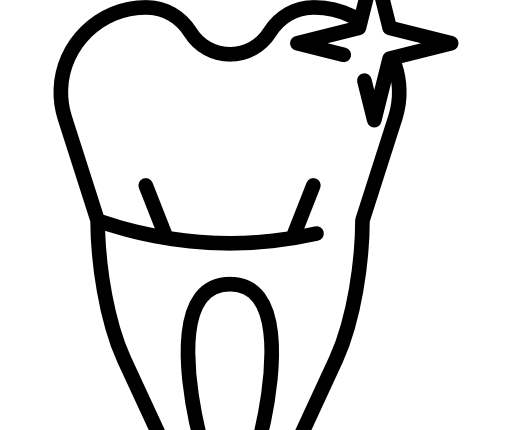Root canal therapy often carries a stigma, evoking images of dread and discomfort. But what if we told you that this
common dental procedure in Winston-Salem NC is actually a lifesaver for your teeth? The truth is, root canals are essential in preserving your smile and maintaining oral health. In cities like Winston-Salem, NC, endodontics play a crucial role in preventing further damage to your teeth while alleviating pain. Let’s dive into the science behind root canal therapy and uncover how it works to keep those pearly whites intact!
What is a Root Canal in Winston-Salem NC?
A root canal is a dental procedure designed to treat infection or damage within the tooth. It focuses specifically on the pulp, which contains nerves and blood vessels vital for tooth health.
When this inner layer becomes inflamed or infected due to decay or injury, a root canal can save the tooth from extraction. The treatment involves removing the problematic pulp, cleaning out the interior of the tooth, and sealing it to prevent further issues.
Many people fear that root canals are painful; however, advancements in dentistry have made them more comfortable than ever. With local anesthesia and modern techniques, patients often feel little to no discomfort during the process.
A successful root canal allows patients to retain their natural teeth while eliminating pain and infection. It's an essential aspect of maintaining overall oral health in Winston-Salem's vibrant community.
Understanding the Anatomy of a Tooth
A tooth is a remarkable structure made up of several layers. Understanding its anatomy helps demystify procedures like root canal therapy.
The outermost layer is enamel, the hardest substance in the human body. It protects your teeth from daily wear and tear. Beneath that lies dentin, a softer layer that supports enamel and contains microscopic tubules connecting to nerves.
At the center resides the pulp chamber, housing soft tissue, blood vessels, and nerves. This vital area nourishes the tooth during development.
Surrounding all these layers is cementum, which anchors teeth to their supportive structures in the jawbone. Each part plays a crucial role in maintaining oral health while ensuring functionality for chewing and speaking.
When damage occurs within this intricate system, it can lead to pain or infection, highlighting why understanding tooth anatomy matters for effective treatment options like endodontics in Winston-Salem, NC.
Causes of Damage to the Tooth's Pulp
Damage to the tooth's pulp can stem from various factors.
- One common cause is dental decay. When cavities are left untreated, harmful bacteria invade deeper layers of the tooth, reaching the pulp.
- Trauma also plays a significant role. A fall, sports injury, or any blunt force can crack or fracture a tooth. This allows bacteria to enter and wreak havoc on the sensitive inner tissue.
- Gum disease is another contributor. Infections that start in the gums can spread to adjacent teeth and their pulp over time.
- Additionally, repeated dental procedures on a single tooth may weaken it structurally, increasing vulnerability to infection or damage.
Understanding these causes is essential for prevention and timely treatment by an endodontist in Winston-Salem, NC. Taking care of your oral health significantly reduces risks associated with pulp damage.
Symptoms of a Damaged Pulp and When to Seek Treatment
A damaged pulp can manifest in various ways.
- One of the most common symptoms is a persistent toothache. This pain may be sharp, throbbing, or constant.
- Sensitivity to hot or cold temperatures is another red flag. If your tooth hurts after consuming these items, it might signal an underlying issue.
- Swelling around the affected area often accompanies pulp damage. This swelling can indicate infection and should not be ignored.
- Discoloration of the tooth itself can also occur as a result of pulp problems. A darkening hue suggests that something deeper is amiss.
If you experience any of these symptoms, it’s crucial to consult with a dental professional promptly. Early intervention can prevent further complications and save your tooth from extraction later on. Addressing issues sooner rather than later is key to maintaining oral health and comfort.
The Process of Root Canal Therapy
Root canal therapy is a carefully orchestrated procedure designed to save your tooth. It typically begins with an X-ray, allowing the dentist to assess the extent of damage and plan accordingly.
Once you’re comfortably numbed, the dentist creates a small opening in the crown of your tooth. This access point allows for thorough cleaning and disinfection of the pulp chamber and root canals.
Specialized instruments are used to remove infected or damaged tissue from within. After cleaning, these spaces are filled with a biocompatible material called gutta-percha, sealing them off from future infection.
The tooth receives a temporary filling while plans for permanent restoration, often a crown, are discussed. Each step is crucial for ensuring that your tooth remains functional long after treatment.
Contact us to learn more.
Post-Treatment Care and Follow-Up Visits
After your root canal therapy, taking care of your tooth is essential for a smooth recovery. Initially, you might experience some discomfort or sensitivity. Over-the-counter pain relievers can help manage this.
Your dentist may also prescribe medication tailored to your needs.
It's vital to maintain good oral hygiene during the healing process. Brush gently around the treated area and floss carefully to avoid any irritation. Regular cleaning helps prevent infections and promotes faster healing.
Follow-up visits play a crucial role in ensuring that everything is healing properly. During these appointments, your endodontist will assess the treatment site and check for signs of complications. Staying on schedule with these visits allows for early intervention if needed.
Don’t hesitate to reach out if you notice unusual symptoms like prolonged pain or swelling post-treatment. Open communication with your dental team ensures you're on track toward optimal oral health.
Conclusion
Root canal therapy is a vital procedure that can save a tooth from extraction and alleviate pain. Understanding the anatomy of your teeth helps you appreciate why this treatment is necessary when the pulp becomes damaged. The causes of damage, such as deep decay or trauma, can lead to significant discomfort and complications if left untreated.
Recognizing the symptoms early on ensures timely intervention, which can make all the difference in preserving your dental health. The process itself may seem daunting, but advancements in endodontics have made it more comfortable than ever for patients in Winston-Salem, NC.
After undergoing root canal therapy, following post-treatment care instructions is essential for optimal recovery. Regular follow-up visits allow your dentist to monitor healing and ensure everything is progressing well.
Endodontics offers people relief from dental pain while preserving their natural teeth—an invaluable option worth exploring when faced with potential tooth issues. Maintaining good oral hygiene practices will further enhance long-term results after this life-saving procedure.
To find out more about the dental services we offer at Eric J. Sadler, DDS & Associates, Winston-Salem, NC, call (336) 744-1300 or schedule an online consultation. You can also visit Dentist in Winston-Salem NC at 3801 Indiana Avenue, Winston-Salem, NC 27105.









